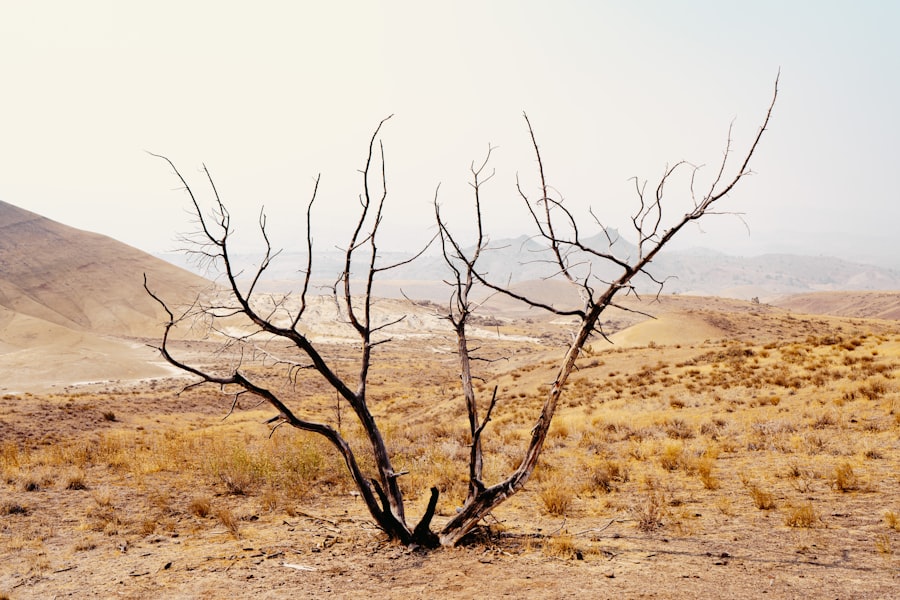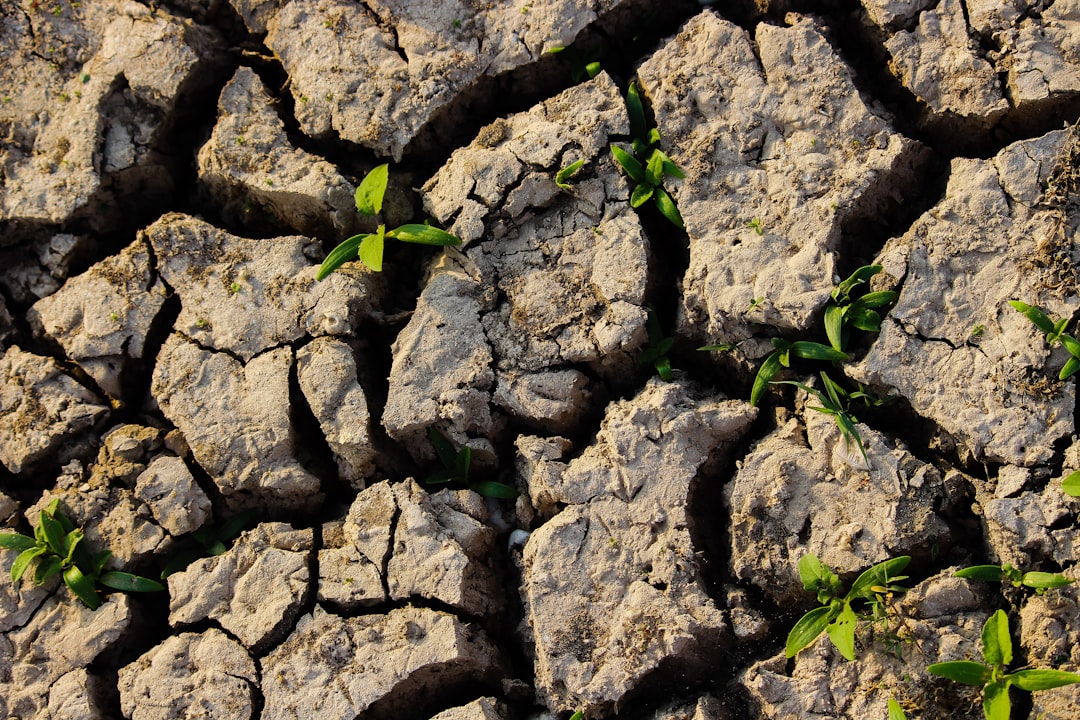New York City, a bustling metropolis known for its iconic skyline and vibrant culture, faces an increasingly precarious future due to climate change. As one of the most densely populated urban areas in the world, the city is particularly susceptible to the myriad effects of a warming planet. Rising temperatures, extreme weather events, and shifting sea levels pose significant threats to the city’s infrastructure, public health, and economy.
The urgency of addressing these vulnerabilities has never been more pronounced, as the consequences of inaction could be catastrophic for millions of residents and countless businesses. The city’s unique geography, with its extensive coastline and low-lying areas, exacerbates its vulnerability. As climate change accelerates, New York City must confront the reality that its very existence is at stake.
The interplay between urban development and environmental sustainability has become a critical focus for city planners, policymakers, and residents alike. Understanding the multifaceted challenges posed by climate change is essential for devising effective strategies to safeguard the city’s future.
Key Takeaways
- NYC is highly vulnerable to the impacts of climate change due to its coastal location and dense urban infrastructure.
- Rising sea levels pose a significant threat to NYC’s infrastructure, including transportation systems and critical facilities.
- Extreme weather events, such as hurricanes and heatwaves, have a significant impact on NYC, affecting public health and infrastructure.
- Low-lying areas of NYC are at high risk of flooding, which can result in significant damage to property and infrastructure.
- Heatwaves and the urban heat island effect in NYC pose a threat to public health and can exacerbate existing inequalities in the city.
Rising Sea Levels and the Threat to NYC’s Infrastructure
One of the most pressing concerns for New York City is the rise in sea levels, a direct consequence of climate change driven by melting ice caps and thermal expansion of seawater. Projections indicate that sea levels could rise by as much as six feet by the end of the century if current trends continue. This alarming forecast poses a significant threat to the city’s infrastructure, including transportation systems, utilities, and residential buildings.
The implications of rising sea levels extend beyond immediate flooding risks; they also threaten the long-term viability of essential services. For instance, the city’s wastewater treatment facilities are at risk of being overwhelmed during storm surges, leading to potential public health crises.
As infrastructure becomes increasingly compromised, the financial burden on taxpayers and city budgets will grow. The need for comprehensive planning and investment in resilient infrastructure has never been more urgent, as New York City grapples with the reality of a changing climate.
Extreme Weather Events and Their Impact on NYC

In recent years, New York City has experienced an uptick in extreme weather events, including hurricanes, heavy rainfall, and intense heatwaves. These occurrences are not merely anomalies; they are indicative of a broader trend linked to climate change. The devastation wrought by Hurricane Sandy in 2012 serves as a stark reminder of the potential consequences of such events.
The storm caused widespread flooding, power outages, and significant damage to homes and businesses, highlighting the city’s vulnerability to natural disasters. The impact of extreme weather extends beyond physical damage; it also disrupts daily life and economic activity. Businesses may face closures due to flooding or power outages, while residents may be forced to evacuate their homes.
The psychological toll on communities can be profound, as individuals grapple with loss and uncertainty. As climate change continues to intensify these weather patterns, New York City must prioritize resilience planning to mitigate future risks and protect its residents from the devastating effects of extreme weather.
The Risk of Flooding in Low-lying Areas of NYC
| Area | Flooding Risk Level | Population at Risk |
|---|---|---|
| Manhattan | High | 1,230,000 |
| Brooklyn | Medium | 980,000 |
| Queens | High | 1,450,000 |
| Staten Island | Low | 320,000 |
Low-lying areas of New York City are particularly susceptible to flooding, especially during heavy rainfall or storm surges. Neighborhoods such as Lower Manhattan, parts of Brooklyn, and sections of Queens face heightened risks due to their proximity to water bodies. The combination of rising sea levels and increased precipitation creates a perfect storm for flooding events that can displace residents and disrupt local economies.
Efforts to address flooding risks have included the implementation of green infrastructure solutions, such as rain gardens and permeable pavements, designed to absorb excess rainwater. However, these measures alone may not be sufficient to combat the scale of flooding anticipated in the coming decades. Comprehensive flood management strategies must be developed that incorporate both natural and engineered solutions to protect vulnerable communities from inundation.
Heatwaves and Urban Heat Island Effect in NYC
As global temperatures rise, New York City is experiencing more frequent and intense heatwaves. The urban heat island effect exacerbates this issue, as concrete and asphalt absorb and retain heat more than natural landscapes. This phenomenon leads to significantly higher temperatures in urban areas compared to surrounding rural regions, creating health risks for vulnerable populations such as the elderly and those with pre-existing health conditions.
The consequences of extreme heat are far-reaching; they can strain energy resources as demand for air conditioning surges, leading to potential blackouts. Additionally, heat-related illnesses can increase during prolonged periods of high temperatures, placing additional burdens on healthcare systems. To combat these challenges, city officials are exploring initiatives such as increasing green spaces and implementing cool roofs to mitigate heat absorption.
These strategies aim not only to improve public health but also to enhance overall urban resilience in the face of climate change.
The Threat of Storm Surges and Coastal Erosion in NYC

Storm surges pose a significant threat to New York City’s coastal areas, particularly during hurricanes or nor’easters. These surges can lead to rapid increases in water levels that inundate neighborhoods and overwhelm drainage systems. The combination of storm surges with rising sea levels creates a compounded risk that necessitates urgent attention from city planners and emergency management officials.
Coastal erosion further complicates this issue by gradually wearing away shorelines and increasing vulnerability to flooding. Areas such as Staten Island and parts of Brooklyn are particularly at risk as natural barriers diminish over time. To address these threats, New York City is investing in coastal protection measures such as seawalls, levees, and natural buffers like wetlands that can absorb storm impacts while providing ecological benefits.
These initiatives represent a proactive approach to safeguarding both people and property from the dual threats of storm surges and coastal erosion.
Vulnerability of NYC’s Public Health to Climate Change
Climate change poses significant risks to public health in New York City, affecting air quality, water supply, and disease transmission patterns. Increased temperatures can exacerbate air pollution levels, leading to respiratory issues among vulnerable populations. Additionally, heavy rainfall can overwhelm sewage systems, resulting in water contamination that poses serious health risks.
The spread of vector-borne diseases is another concern linked to climate change. Warmer temperatures can expand the habitats of disease-carrying insects like mosquitoes and ticks, increasing the likelihood of outbreaks such as West Nile virus or Lyme disease. Public health officials must remain vigilant in monitoring these trends and implementing preventive measures to protect residents from emerging health threats associated with climate change.
Climate Change and its Impact on NYC’s Economy
The economic implications of climate change for New York City are profound and multifaceted. As extreme weather events become more frequent, businesses face increased operational disruptions that can lead to financial losses. The tourism industry, a vital component of the city’s economy, is particularly vulnerable; visitors may be deterred by extreme weather or safety concerns related to flooding.
Moreover, rising sea levels threaten valuable real estate along the waterfront, potentially leading to decreased property values and increased insurance costs. The financial sector must also grapple with climate-related risks as investors increasingly consider environmental factors in their decision-making processes. To ensure economic resilience in the face of climate change, New York City must prioritize sustainable development practices that promote long-term growth while mitigating environmental impacts.
NYC’s Efforts to Mitigate the Effects of Climate Change
In response to these challenges, New York City has undertaken numerous initiatives aimed at mitigating the effects of climate change. The city’s “OneNYC” plan outlines ambitious goals for reducing greenhouse gas emissions while enhancing resilience against climate impacts. This comprehensive strategy includes investments in renewable energy sources, energy efficiency programs, and sustainable transportation options.
Additionally, community engagement plays a crucial role in these efforts; residents are encouraged to participate in discussions about climate action and contribute ideas for local solutions. By fostering collaboration between government agencies, businesses, and community organizations, New York City aims to create a more sustainable future that prioritizes environmental stewardship alongside economic growth.
The Role of Community Engagement in Addressing NYC’s Vulnerability to Climate Change
Community engagement is essential for addressing New York City’s vulnerability to climate change effectively. Local residents possess invaluable knowledge about their neighborhoods’ unique challenges and opportunities for resilience-building. By involving communities in decision-making processes, city officials can develop tailored solutions that reflect local needs while fostering a sense of ownership among residents.
Programs that promote awareness about climate change impacts can empower individuals to take action within their own communities. Initiatives such as neighborhood clean-up events or tree-planting campaigns not only enhance local environments but also build social cohesion among residents. By cultivating a culture of environmental stewardship at the grassroots level, New York City can strengthen its collective response to climate change challenges.
Taking Action to Protect NYC from Climate Change
As New York City confronts the realities of climate change, it is imperative that all stakeholders—government officials, businesses, community organizations, and residents—come together to take decisive action.
By investing in innovative solutions and fostering community engagement, New York City can pave the way for a more secure future amid an uncertain climate landscape.
The time for action is now; proactive measures will not only protect the city’s infrastructure but also safeguard its diverse population from the far-reaching impacts of climate change. Through collaboration and commitment to sustainability, New York City can emerge as a model for urban resilience in an era defined by environmental challenges.
New York City, with its dense population and extensive infrastructure, faces significant challenges due to climate change, including rising sea levels and increased frequency of extreme weather events. An insightful article on this topic can be found on MyGeoQuest, which delves into the city’s vulnerabilities and the measures being taken to mitigate these risks. For more detailed information, you can read the related article by visiting MyGeoQuest. This resource provides a comprehensive overview of the strategies being implemented to protect the city and its residents from the adverse effects of climate change.
WATCH THIS! The Real Cost of NYC Living: Your Wallet, Sanity, and Subway Survival Skills
FAQs
What is climate change vulnerability?
Climate change vulnerability refers to the degree to which a system, such as a city or region, is susceptible to the impacts of climate change. This can include factors such as exposure to climate-related hazards, sensitivity to those hazards, and the capacity to adapt and respond to them.
What are some of the vulnerabilities that NYC faces due to climate change?
New York City faces a range of climate change vulnerabilities, including sea level rise, increased frequency and intensity of extreme weather events, heat waves, and impacts on infrastructure, public health, and ecosystems.
How is NYC addressing its climate change vulnerabilities?
New York City has implemented a range of initiatives to address its climate change vulnerabilities, including the development of climate resilience plans, investments in infrastructure improvements, and policies to reduce greenhouse gas emissions and promote sustainable development.
What are some of the potential impacts of climate change on NYC?
Potential impacts of climate change on New York City include increased flooding from sea level rise and storm surges, heat-related health risks, damage to infrastructure, and disruptions to ecosystems and biodiversity.
What can individuals do to help mitigate the impacts of climate change in NYC?
Individuals can help mitigate the impacts of climate change in New York City by reducing their carbon footprint, supporting sustainable transportation options, conserving energy and water, and advocating for policies and initiatives that promote climate resilience and sustainability.
